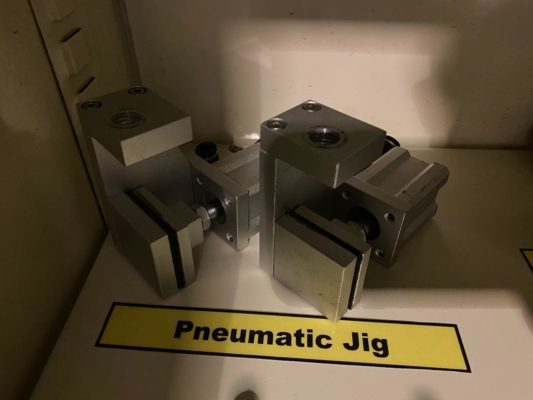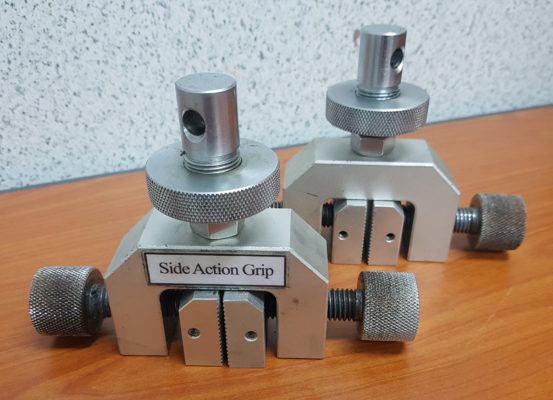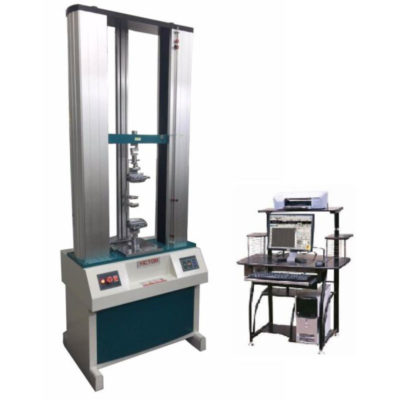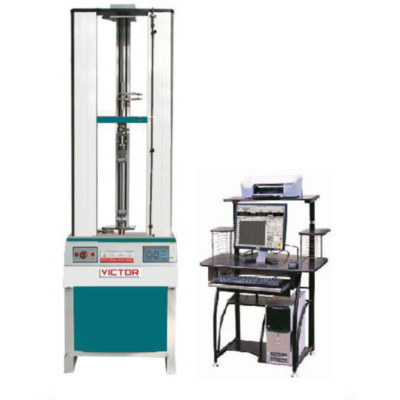ASTM is an international standards organization that is located in the United States of America. The purpose it was introduce to the industry is to publish technical standard agreements for various materials, product, systems and others. Among the ASTM standards that are often use in the industry is ASTM D882.
ASTM D882 Test Standard
Description For ASTM D882
ASTM D882 is an international test standard design for testing the tensile properties of thin plastic sheeting and films. The thickness of the plastic is quite thin. Its thickness is less than 1.0 mm (0.04 in.). This test method can be use to test all plastics within the thickness range describe. If the plastic thickness is 1.0 mm (0.04 in.) or thicker than that, it should be determine according to Test Method ASTM D638.
ASTM D882 is very similar to ASTM D638. But there are 2 differences between ASTM D882 and ASTM D638. The first is in terms of specimen thickness and the second is specimen preparation. ASTM D882 is design specifically for thin sheeting while ASTM D638 for thicker sheeting.
For specimen preparation, ASTM D882 samples can be cut into simple rectangular strips rather than the typical dumbbell shape such as ASTM D638.
In this test, the specimen extension can be measure by grip separation, extension indicators, or displacement of gage marks. Manufacturing industries such as plastic, film and others often use this standard.
Nowadays, ASTM standards are highly preferred by both corporate or government bodies. In Malaysia, most industries use the ASTM D882 standard in their companies. The Malaysian government has also adopt this standard.
Basically, tensile tests measure the force require to break a specimen and the extent to which the specimen stretches or elongates to that breaking point. These tests produce a stress-strain diagram, which is use to determine tensile modulus.
This data is often use by the Research and development (R&D) department as well as Quality Assurance (QA) / Quality control (QC) to ensure the product meets the require standards. Tensile tests can be perform on using Universal Testing Machine (UTM) and also known as tensile testing machine. The following are the properties of tensile commonly measure through ASTM D882:
- ASTM D882 pulls the plastic until it breaks in order to measure elongation, tensile modulus, tensile yield strength, and tensile strength at break.
Specimen For ASTM D882
1. Thin plastic sheeting or film
Grips For ASTM D882
We recommend using pneumatic or manual grips with rubber-coated inserts. The rubber coating can prevent the film from slipping. Usually, the pneumatic grip is used to facilitate the assembly of specimens. You can open the pneumatic grips with finger toggles or foot pedals. Foot pedals are really easy to use and allow the operator to use both hands to load the sample.
1. Pneumatic Grip

Pneumatic grips are particularly useful when a variety of materials. The gripping force is generated by pneumatic cylinders acting directly on the jaws or via a lever system.
2. Side action grip

Suitable to test fabric, textile webbing, metal, film, rubber and plastic
Extensometers For ASTM D882
In this test method, you don’t need to use an extensometer to measure the elongation as the system’s built in crosshead displacement indicator is sufficient. This reduces the cost of the testing system and simplifies the testing process.
Type of UTM machine
We recommend using UTM machines with a capacity of 2kN-20kN. it depends on the strength of the plastic or film. We also recommend using smaller machines such as dual-column types
1. VEW 2307
VEW 2307 Desktop microcomputer-type tensile testing machine is design by our company which is made of aluminium, it is not only small, used widely, do not take up space, nice appearance, but also easy to move with the hoop, it is very convenient to operate.
- It is controlled by computer and printing out the testing report; the outward appearance used the closing board dealing with high-level baking varnish, which obviously elegant
- It especially suitable for controlling quality in the production line, this series of machine is mainly apply to test the non-metallic and metallic materials which the load is less than 2KN
2. VEW 2308

The machine is design by mechanical-electrical integration, the composition of the force-measuring Sensor, transmitter, microprocessor, mechanism of load drive, computer and color inkjet printer.
The high-precision electronic motor can be set to five-speed, the components are connect by plug-way, Floor-standing models, it is taken account of modern industrial design and ergonomics in modelling and Coating.
It can be tested with all the materials in the stretch, compression, bending, shear, embedded relay, Peeling. tearing, crack, etc, such as rubber, plastics, leather, metal, nylon wire, fabric, paper, aerospace, packaging, construction, petrochemical, electrical, vehicle, etc.
The implementation of standards and standard configuration:
- GB/T4689.20-1996 Measuring fastness of leather’s adhesion
- QB/T2710-2005 Measuring leather’s expansion and the rate of elongation
- QB/T2711-2005 measuring tear force of leather
- QB/T2712-2005 measuring leather’s strength and stretch of spherical crack test
Test Procedure
- Prepare the specimens as describe in the method.
- Load the specimen into the grip.
- Clamp specimen at the top of the grip first then carefully clamp the sample into the bottom grip.
- Make sure the specimen is aligned.
- Zero all the testing machine before starting the test.
- A slight preload may be apply to align the grips and remove slack.
- Start the test with constant rate until its failure/breaks.

